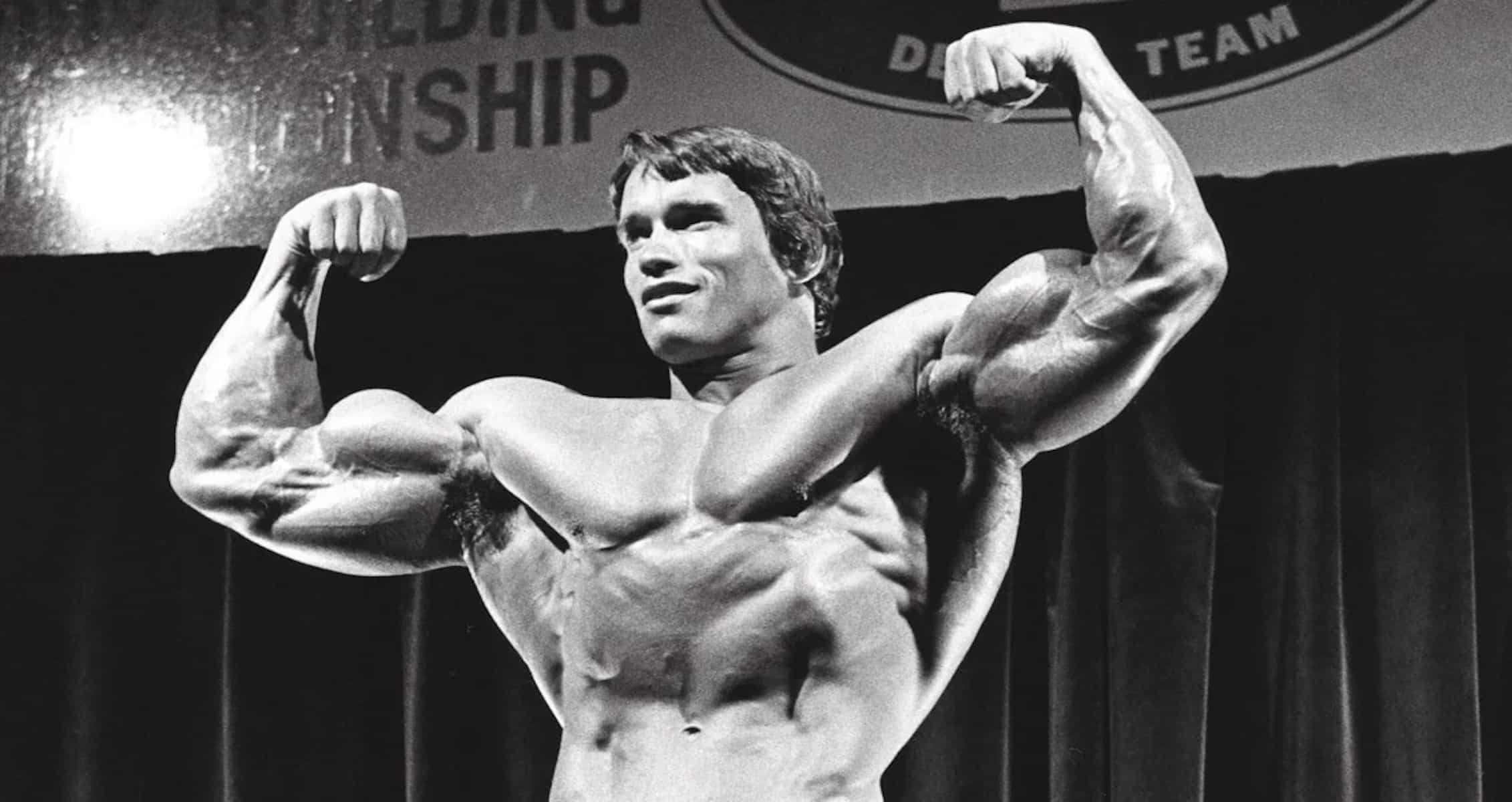Full Body Workouts with limited work in the gym
Full body workouts allow you to grow muscle with limited days in the gym. While many people ignore these types of workouts, they can actually be very beneficial to your muscle growth.
Split routines have their time and place but can often lead to overtraining, muscular imbalances, or burnout. If you’re short on time or skipping days in the gym, you’ll be better off incorporating full body workouts into your training to ensure that you are hitting on each muscle group.
Full body workouts tend to get a bad rep in the bodybuilding world, but funny enough, full body workouts is where bodybuilding started.
Find out below all the benefits full body workouts bring to the table.
Old School Bodybuilding
In the Golden Era of bodybuilding (1950’s and ‘60’s), you would find most of these old-timers all on full body workouts, including Leroy Colbert and Vince Gironda to name a few; even Arnold Schwarzenegger was doing full body workouts at one point. This was before the revolution of steroids in the sport became mainstream though. Since these bodybuilders were all-natural, they knew the importance of rest and recovery for muscle growth. Therefore, they did full body workouts to allow their bodies more days off.
Since performance enhancing drugs allow your body recover quicker, this means you are able to lift and produce more than what it’s capable of alone, it’s common for many bodybuilders to do more volume, which would otherwise be too much for the natural bodybuilder. Therefore, many bodybuilders nowadays are on split routines since you’ll be able to overload each muscle group with more volume. (That’s not to say all bodybuilders doing split routines are on drugs though.)
Full Body Workouts vs. Split Workouts
When you’re lifting weights in the gym, you can either opt for full body workouts or a split workout routine; both have their pros and cons.
Split Workouts
Split workout routines are designed to separate muscle groups into different days. There are a variety of ways to do this. Below is an example of a 5-day split routine.
5 Day Split Routine
Typically, there are 3, 4, and 5 day split routines. The benefit of a split routine is that you can dedicate an entire day to one or two muscle groups, which really targets the muscle more and gives them more of a beat down.
On the other hand with a full body workout, you’re limited to only 1-2 exercises per muscle group, which can be pretty underwhelming.
Since you’re targeting different muscle groups on different days with a split workout, you can reduce the number of rest days that you take.
If you’re a competitive bodybuilder, this is recommended because you’ll be able to maximize muscle growth since you can give your muscles more volume each workout. Also, you’ll be able to isolate muscle groups, such as your triceps and biceps more efficiently, which are important for bodybuilding.
One issue with this design is that you have to stay on schedule with your workouts and you can’t miss any days, or you risk overdeveloping or under developing muscles, which can lead to muscular imbalances and less muscle growth. If you’re on a 5 or 6-day split routine, it will be much easier to miss a day or two, which means you would have skipped a muscle group or two for that week.
Full Body Workouts
Full body workouts are working out your entire body each workout. They can be more efficient than split routines and save you a ton of time. That’s because you can work out your entire body in just one workout versus three, four, five, or six workouts. And although you can’t do as much volume each workout for each muscle group (without overtraining in one workout), you can make up for that volume missed by doing more full body workouts throughout the week.
It’s recommended that you do 2-4 full body workouts each week. If you happen to miss a workout, it’s no big deal! That’s because you don’t have a schedule you need to follow to make sure you’re working out your entire body — you already are each workout! This allows you a lot of flexibility in your workouts and schedule.
If you love other exercises besides lifting weights, then this is perfect! Now, you can play basketball, go for a hike, etc. on the days you aren’t in the gym.
Benefits of Full Body Workouts
Don’t confuse full body workouts for being for “beginners” or “run-of-the-mill” workout routines. Aside from having more time outside of the gym and not having to rigidly stick to a workout routine, full body workouts have a plethora of benefits.
Muscle Growth
Full body workouts allow you to focus on the muscles and exercises that give you the bulk of your muscle growth. Isolation exercises such as bicep curls and tricep extensions are good bonuses to add to your workout, but they shouldn’t be what you focus on. Full body workouts get rid of a lot of exercise fluff and let you hone in on what matters most —exercises that target large muscle groups, including squats, bench press, and rows.
This 2017 article proves that multi-joint exercises produce more strength than single-joint exercises (1). (Bye-bye arm day!)
If you’re prone to overtraining and don’t allow your body enough days off to recover, then you could be surprised just how much your muscles grow if you switch over to full body workouts and take more days off.
Research shows that high-volume and low-volume training produce equal amounts of strength and lean muscle mass (2).
Recovery
Full body workouts allow your body more time to recover. When you workout, both your CNS and muscles take a toll and they need time to recuperate. Since you’re only working out 2-4 days a week with full body workouts, your body will have much more time to recover than its 4, 5, and even 6 split routine counterparts. Recovery is important to muscle growth. Muscle grows while you’re resting, now while you’re lifting, so the additional rest days will yield more muscle (3).
Also, since you’ll be well-rested, you’ll be able to fully push yourself each time in the gym. Whereas with split routines, you’ll be tired or sore a lot of gym days, which means you’ll be working out a submaximal intensity, leading to less muscle growth.
Full body workouts also allow you flexibility. You can do strength workouts or HIIT routines, with no certain days you have to do them. You can play basketball one day, do a strength training full body workout another, and do a HITT workout on the third day. This gives you the freedom to never get bored of exercise and makes exercising more fun. Plus, you’ll build a more well-rounded body that has strength, endurance, and is athletic.
When doing full body workouts, I recommend you don’t work out any more than 3-4 days a week because of delayed-onset muscle soreness (4). However, research supports that you can train consecutive days in a row and still have similar improvements in strength and body composition than having days off in between lifts (5). (No wonder Rich Froning can do multiple full body workouts every day). Therefore, as long as you aren’t overtraining and keeping the volume low, it’ll be safe for you to do back-to-back full body workouts.
Key Points
- Flexible schedule
- Better recovery
- More endurance
- Focus on large muscle groups
- More time outside of the gym
Conclusion
You can get amazing results in the gym only lifting weights 2-3 times a week. You’ll recover faster, be replenished each day back in the gym, and have more time outside the gym.
Do you prefer full body workouts or split routines? If you found this article valuable, follow Generation Iron on Instagram, Facebook, and Twitter for daily content.
References
1 – Paoli A, Gentil P, Moro T, Marcolin G and Bianco A (2017) Resistance Training with Single vs. Multi-joint Exercises at Equal Total Load Volume: Effects on Body Composition, Cardiorespiratory Fitness, and Muscle Strength. Front. Physiol. 8:1105. doi: 10.3389/fphys.2017.01105
2 – Thomas, M. H., & Burns, S. P. (2016). Increasing Lean Mass and Strength: A Comparison of High Frequency Strength Training to Lower Frequency Strength Training. International journal of exercise science, 9(2), 159–167.
3 – MacDougall, J. D., Gibala, M. J., Tarnopolsky, M. A., MacDonald, J. R., Interisano, S. A., & Yarasheski, K. E. (1995). The time course for elevated muscle protein synthesis following heavy resistance exercise. Canadian journal of applied physiology = Revue canadienne de physiologie appliquee, 20(4), 480–486. https://doi.org/10.1139/h95-038
4 – Hotfiel, T., Freiwald, J., Hoppe, M. W., Lutter, C., Forst, R., Grim, C., Bloch, W., Hüttel, M., & Heiss, R. (2018). Advances in Delayed-Onset Muscle Soreness (DOMS): Part I: Pathogenesis and Diagnostics. Delayed Onset Muscle Soreness – Teil I: Pathogenese und Diagnostik. Sportverletzung Sportschaden : Organ der Gesellschaft fur Orthopadisch-Traumatologische Sportmedizin, 32(4), 243–250. https://doi.org/10.1055/a-0753-1884
5 – Yang, Y., Bay, P. B., Wang, Y. R., Huang, J., Teo, H., & Goh, J. (2018). Effects of Consecutive Versus Non-consecutive Days of Resistance Training on Strength, Body Composition, and Red Blood Cells. Frontiers in physiology, 9, 725. https://doi.org/10.3389/fphys.2018.00725











